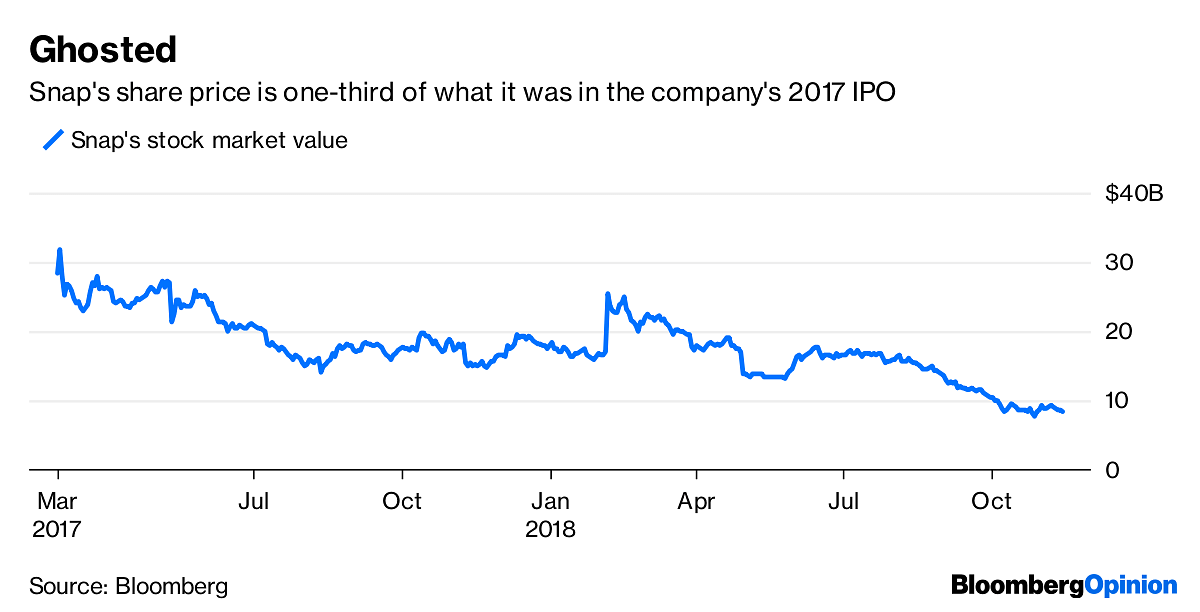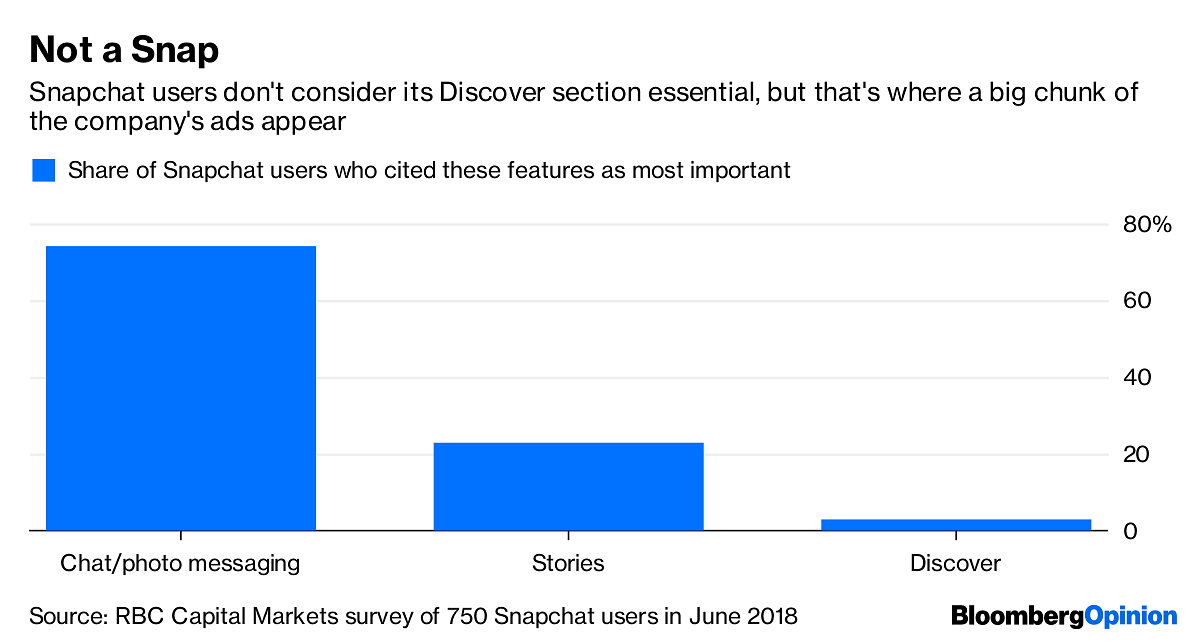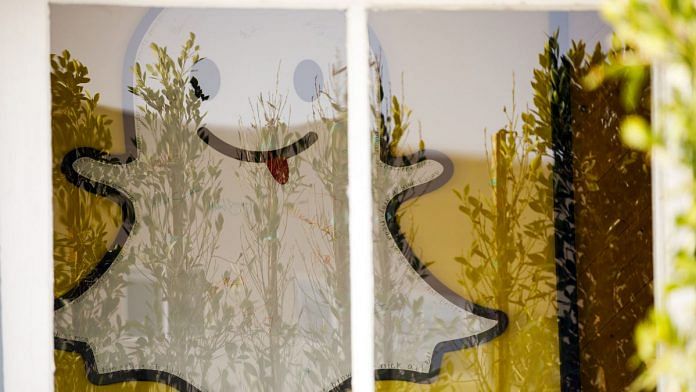Facebook has relentlessly copied Snapchat. It is time to turn the tables.
What if Snapchat were to copy Facebook for a change?
Evan Spiegel, Snap Inc.’s co-founder and chief executive, has consistently said that Snapchat is a place for deep interactions with a small number of close contacts. And indeed much of the app’s activity is people firing photos and short videos — called “snaps” — back and forth privately to friends as a form of visual conversation.
But advertisements don’t appear in the stream of more than 3 billion snaps that users send daily. Instead, a good chunk of Snapchat’s advertising spots pops up in a public part of the app where news organizations, entertainment companies and celebrities post to the world. The split between the heavy use of the chat function and the share of revenue from everything else creates a perverse incentive. Snapchat needs to lure people who are happy snapping all day with their buddies to the part of the app where Snap makes money.

There’s a solution to this, though it’s one that Snapchat fans may not like: Snap should start selling ads in or between the app’s private communications. Facebook is already crossing this Rubicon by experimenting with ways to charge companies for interacting with people in its Messenger chat app, which is also primarily a place for people to communicate out of the public eye with a small circle of people. Facebook’s other messaging app, WhatsApp, will get a similar treatment soon.
Facebook has relentlessly copied Snapchat, and this is a chance for Snap to turn the tables by borrowing select advertising tactics from Facebook’s messaging apps. Introducing ads in chat also harmonizes the company’s advertising strategy with its product focus. Why shouldn’t Snap’s ad strategy be based around the essential and most used feature of its app?
For people who aren’t familiar with Snapchat, it has three basic functions. There’s the camera, which people use to take photos or short videos and doctor them with doodles or animations. Second, there’s a thread of private communications, typically of people sending those visual snaps to friends. And there’s Discover, a section with photo-and-video montages compiled or created by news organizations, entertainment companies and people with a following such as the comedian Kevin Hart. Personal montages from friends, called Stories, are here, too.
Snap makes money from two of those three activities. Companies like Adidas pay to create animations that let people appear to bounce an animated soccer ball on their selfies. Advertisers also buy commercial messages within the Discover montages and between friends’ Stories. Snap doesn’t break down the features that draw the most use or advertising revenue, but analysts estimate that Snapchat users spend a small minority of their time in the Discover section, which just happens to be where the company generates a large share of its ad revenue.
That means Spiegel’s focus — not one of his strong suits — is split between the feature that Snapchat users want most and his company’s business imperatives. Identifying the best way to make money from the untapped potential of Snap chats should be one of the top priorities from the executive Snap hired recently to oversee its advertising business and other money-making areas. Snap hasn’t ruled out this possibility. On a conference call with analysts in August, Snap’s chief financial officer said the company was “looking at monetizing all aspects of the app” and mentioned the possibility of making money from snap activity.

I confess I don’t have a clear idea of how Snapchat should mix advertisements into the stream of personal communications. The company initially faced backlash but persisted in putting commercial messages between the personal Stories. Snap could do the same between individual snaps, which could help it become less reliant on ginning up users’ interest in Discover.
Snapchat is less well suited to commercial interactions than Facebook’s Messenger and WhatsApp, but the older company’s blueprint is still a good place for Snap to start. Facebook is finding ways to get paid by businesses that might interact first with a potential customer on Instagram or Facebook and then carry that activity to the company’s Messenger app to, for example, ask questions about a handbag and order it.
No one has cracked the code yet on effective advertising in personal communications — not even Facebook, which is adept at making money. And there are possible downsides to mixing ads into Snapchat messaging. Snapchat fans might hate it. Plus, the prices for Snapchat’s ads are becoming cheaper as the company embraces computerized auctioning to place them. It’s possible that adding more slots for commercials that Snap can’t sell, or is forced to sell at cut-rate prices or to low-quality advertisers, is the opposite of what the company needs right now.
That’s a worry. But I can’t escape the idea that messaging is the soul of Snapchat. It’s time for the company to unify its product priorities with its financial ones. – Bloomberg



